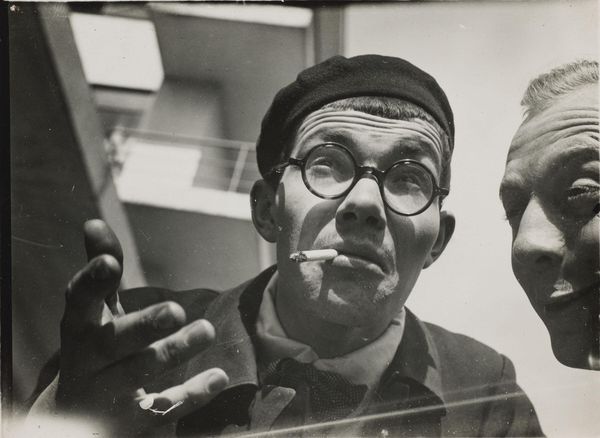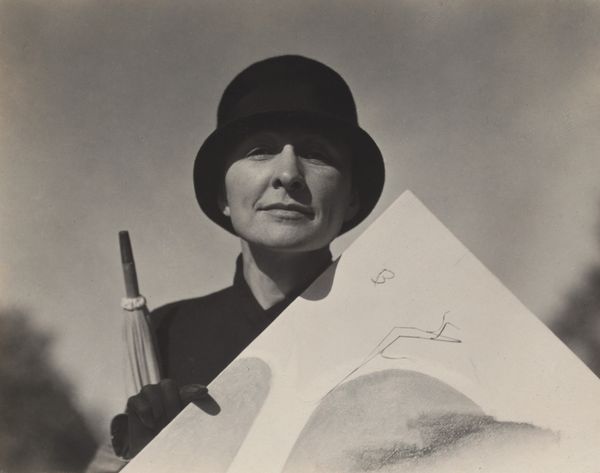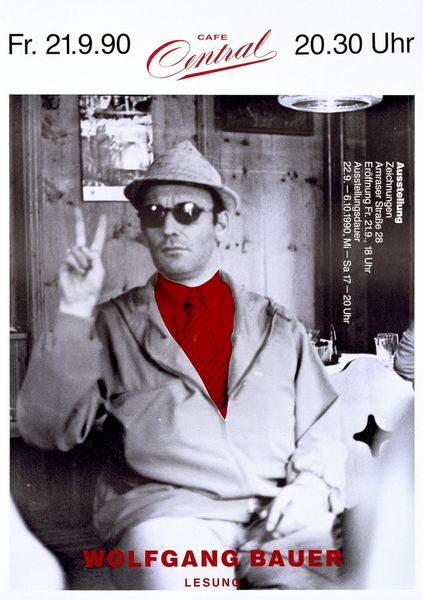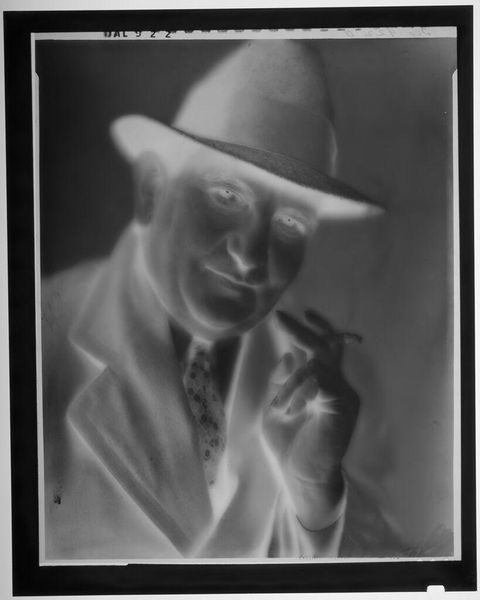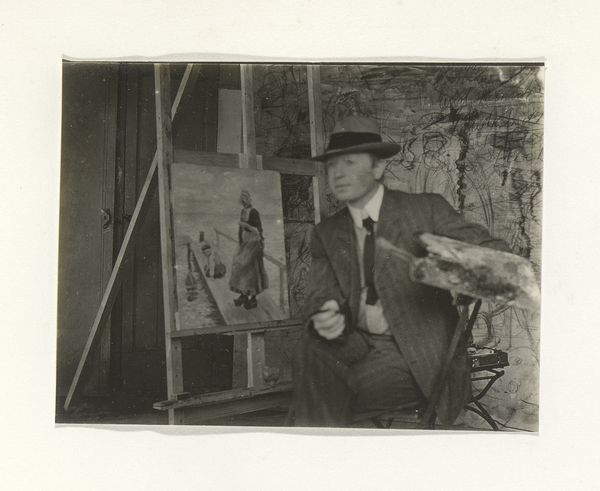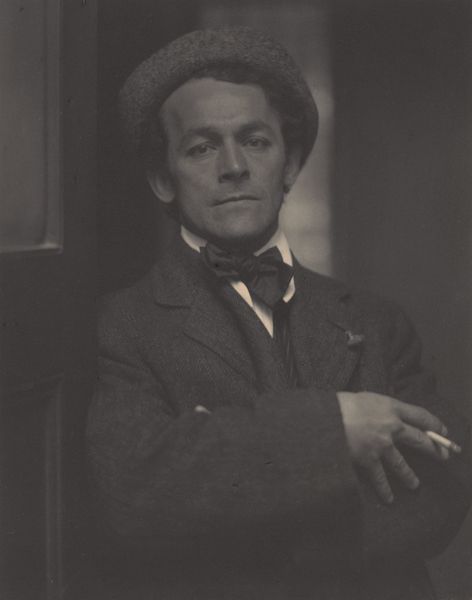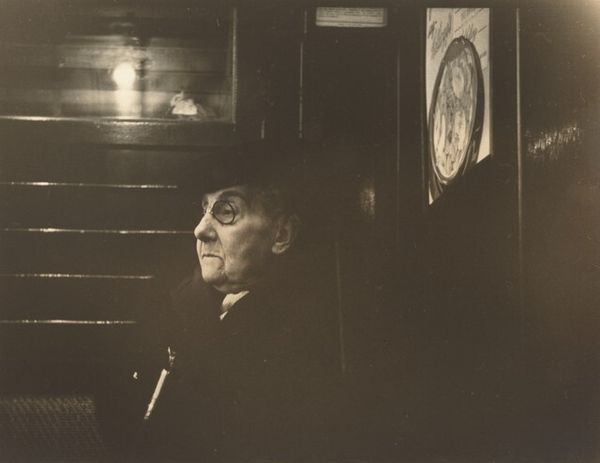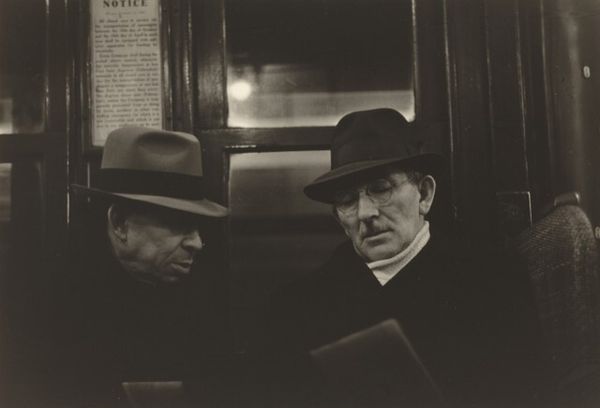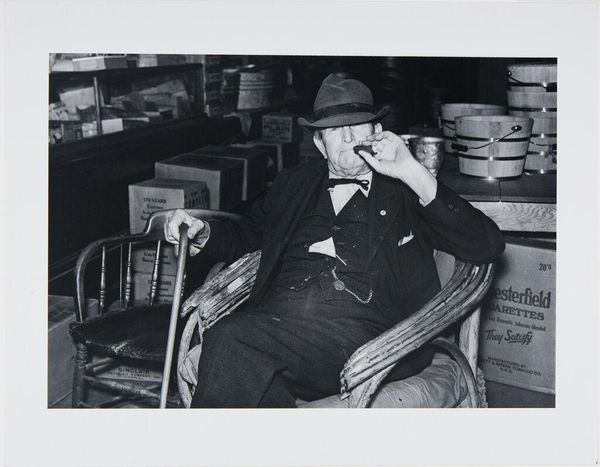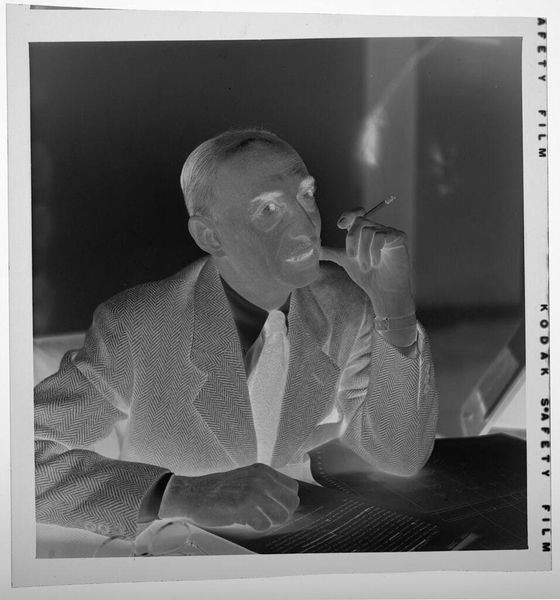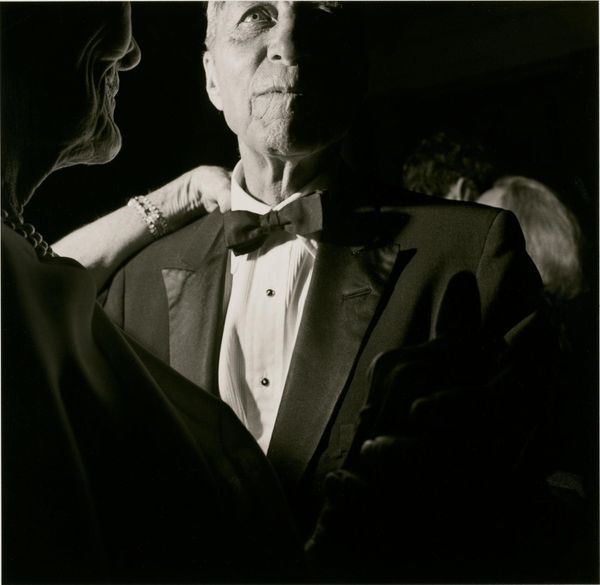
photography, gelatin-silver-print
#
portrait
#
black and white photography
#
photography
#
black and white
#
gelatin-silver-print
#
modernism
#
realism
Copyright: Brassai,Fair Use
Curator: Well, this gelatin-silver print practically radiates the interwar avant-garde spirit! It’s a portrait of Henry Miller taken by Brassai in 1931. What catches your eye first? Editor: Definitely the slightly furtive, almost mischievous gaze peering out from under that hat. It feels like we're catching Miller in a candid moment. There's also a lot happening within the frame--is that a notice on the wall behind him? Curator: Indeed. Brassai, known for capturing the bohemian underbelly of Paris, places Miller against this backdrop, maybe to contextualize Miller, both literally and figuratively. The notices and cluttered papers probably speak volumes about the milieu in which Miller found himself. Consider the use of clothing. A fedora tilted downwards suggests someone of both intellect and street savvy; the loose tie signals a subtle rebellion to traditional standards. Editor: And Brassai certainly highlights this by emphasizing textures, right? From the fedora's felt to Miller’s rumpled coat, each adds another layer of complexity to Miller’s character. This isn't a formally posed portrait meant for bourgeois drawing rooms. Curator: Not at all. This image pulls at the threads of traditional portraiture and is instead designed for something that hints at narrative possibility. Look closely; even the cigarette seems staged. I also appreciate Brassai’s conscious interplay of shadow and light that adds to the symbolism here: a public face shaded by an intriguing dark depth. What could it reveal about his social situation and place in history? Editor: It really makes one consider how portraiture, even photography which presents as documentary evidence, is ultimately a conscious act of construction, both for the artist and the subject. We can talk all we want about Miller's gaze or fedora, but perhaps most poignant here are the unspoken parts captured from behind that door--reminding viewers of Miller’s personal reality when seen within an individual moment of pre-war artistic experimentation. Curator: Very well said. A striking capture and a potent commentary, indeed. Editor: Agreed. I’ll have to think about Henry Miller now, slightly differently.
Comments
No comments
Be the first to comment and join the conversation on the ultimate creative platform.
